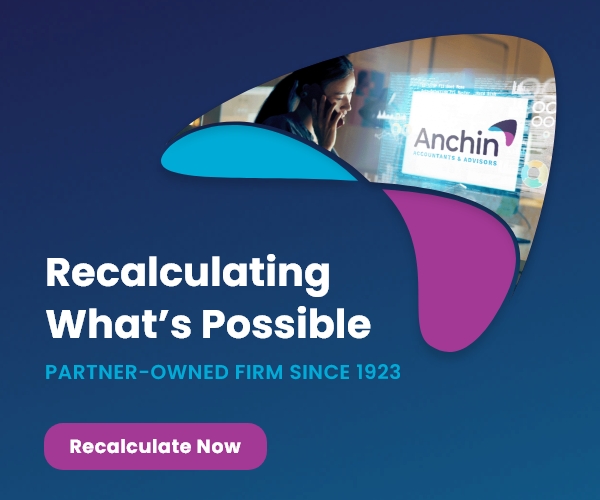Know Your Audience – Meeting Stakeholder Objectives
In the realm of analytical communication, knowing your audience is the compass that guides your message. To effectively communicate analytical findings as a leader, understand what results your stakeholders crave. Are they seeking sales growth, cost reduction, or long-term profitability? Tailor your message to align with these objectives.
Some stakeholders prefer detailed data, others seek concise summaries, and some want to stick to the key bullet points. Whether they are tech-savvy or business-focused, speak their language. Use audience-friendly terms and analogies to transform complex data into a clear path toward their objectives. Become the strategic and data storyteller that bridges insights to action, and watch your audience engage and professional connections flourish.
Define Your Purpose – Aligning Analytical Findings
When communicating analytical findings to stakeholders, clarity of purpose is your guiding star. It’s like setting the destination on your GPS before embarking on a journey. Your aim should harmonize with the strategic objectives of the key stakeholders.
Imagine they are determined to grow their market share without compromising premium prices. In this case, the purpose of your message should revolve around identifying opportunities that expand market share while keeping premium prices intact. It might involve exploring avenues like broadening the customer and unique market offering portfolios or considering acquisitions of complementary products or services. By aligning the purpose of your message with their strategic objectives, you not only enhance the value of your insights but also showcase your role as a strategic partner. Your message becomes a roadmap, ensuring that every step taken gets the business closer to the desired destination of growth without sacrificing premium pricing in this example.
Structure Your Message – Shaping Thoughts, Emotions, and Actions
Crafting an effective message isn’t just about relaying data; it’s about molding perceptions, evoking emotions, and driving actions. Think of it as a three-fold mission: What do you want your key stakeholders to think, feel, and do after absorbing your analytical findings?
Let’s say your analytical findings unveil an exciting opportunity: acquiring complementary products that are gaining popularity and will boost demand for your core offerings. Your message should be structured to nudge stakeholders to think, “This is a sound growth opportunity.” Facts and logical reasoning should lead the way.
Next, consider what you want them to feel. Perhaps you aim for them to feel enthusiastic, optimistic, and energized by the potential of this opportunity. Use empowering language and weave a narrative around success stories and possibilities to evoke positive emotions. Lastly, guide them towards action. You want stakeholders to be not just informed but motivated to act upon your findings. Encourage them to explore the acquisition of complementary products, setting concrete steps in motion to seize the growth opportunity.
By following this formula, your message becomes more than just data; it’s a persuasive tool for driving decision-making. It will help to shape thoughts, kindle emotions, and propel actions, ensuring that your analytical findings lead to meaningful outcomes.
Visualize Your Data – Capturing Attention Strategically
In the world of data, visualizing information isn’t just about aesthetics; it’s a powerful tool for directing attention and amplifying understanding. To communicate analytical findings effectively, consider the psychology of attention as your secret weapon.
First, strategically place key graphics in the center of your presentation. The center of the screen or slide is the focal point, and it’s where your most important visual elements should reside. This ensures that the audience’s eyes are naturally drawn to the critical information. Colors matter, too. Use colors that foster a calm state of mind, like blues and greens, for example. People tend to make better decisions when they feel comfortable and relaxed. Highlighting significant findings with bold, contrasting colors can create visual cues that guide the audience’s focus.
People have a limited attention span. Key message components should be featured prominently at the beginning and conclusion of your presentation. This is when the audience’s attention is at its peak. The opening sets the stage, and the conclusion drives home the main takeaways. Be concise and impactful in these sections, as this is where people are most likely to remember the core message.
Incorporating these principles into your data visualization strategy not only makes your presentation elegant but also strategically engaging, ensuring that your analytical findings are not just seen but truly understood and retained.
Tell a Story – Weaving Data into a Strategic Narrative
Data alone doesn’t tell a story, but it can be the threads that weave together a powerful narrative. When communicating analytical findings, it’s crucial to marry the data with the relevant business aspects and connect them organically to the key stakeholders’ strategic objectives.
Say your analytical findings highlight a remarkable opportunity: acquiring complementary products that align perfectly with the business’s growth trajectory. You need to go beyond numbers and charts to tell a compelling story. Start by setting the stage—what is the current state of the business, its challenges, and its ambitions? This contextual backdrop helps stakeholders understand why your findings matter.
Now, introduce the data. Showcase the potential of this opportunity with clarity. Use visuals, case studies, and practical examples to make the data come to life. Explain how this move aligns with their strategic objectives, whether it’s market share growth, cost control, or premium pricing. As you craft the story, consider the narrative arc. What’s the challenge, and how does a proposed solution (your findings) offer a resolution? What’s the path forward, and how does it lead to success? By integrating analytical findings into a broader narrative that addresses business aspects and strategic goals, you make the data relatable and convey the importance of taking action.
Following this methodology in delivering your story, you become a bearer of insights and a storyteller who guides stakeholders on a journey toward achieving their objectives. By making the data relevant and actionable, you’re more likely to inspire them to embrace your findings as a vital part of their strategic roadmap.
What Else to Consider – Embracing External Dynamics
While your analytical findings are at the core of your message, it’s equally vital to look beyond the internal data and acknowledge the influence of external factors. These external dynamics can shape the context in which your stakeholders’ strategic objectives are pursued. Imagine your stakeholders are determined to grow market share. It’s not enough to just present your findings and proposed actions. You should also incorporate a comprehensive analysis of the business’s external environment.
A SWOT analysis (Strengths, Weaknesses, Opportunities, and Threats) is a valuable tool in this regard. Highlight the current strengths that can be leveraged, weaknesses that should be mitigated, opportunities in the market that must be explored, and threats that should be addressed. Importantly, emphasize the most current aspects and anticipated developments in these categories. This paints a realistic picture of what’s at play in the broader business landscape. By embracing these external dynamics, you demonstrate your understanding of the complexity of their market and your commitment to holistic decision-making. It’s not just about acting on the analytical findings; it’s about navigating the external forces that can either accelerate or hinder progress in the chosen actions.
This comprehensive approach bolsters your credibility and positions you as a strategic partner, not just a data provider. Incorporating external factors into your message ensures that your analytical findings are not isolated insights but are thoughtfully connected to the real-world challenges and opportunities that exist outside the organization.
Conclusion
In the world of FP&A, it’s not merely the data itself that drives strategic decisions but how that data is interpreted and presented to align with your audience’s core concerns. By tailoring your storytelling strategy—understanding your audience, defining a clear purpose, and visualizing insights effectively—you can transform raw numbers into compelling narratives that resonate with stakeholders. When data is framed to address their specific needs and objectives, it ensures not just informed decisions, but meaningful actions. Ultimately, the real power lies not in the data, but in how we connect it to the audience and bring it to life to nudge towards actionable steps.






















